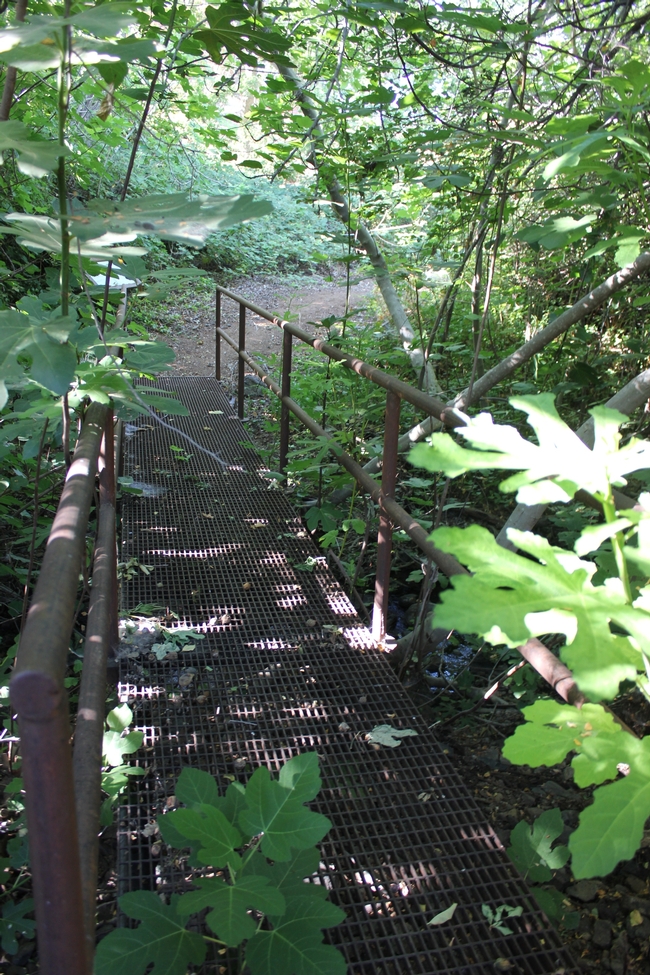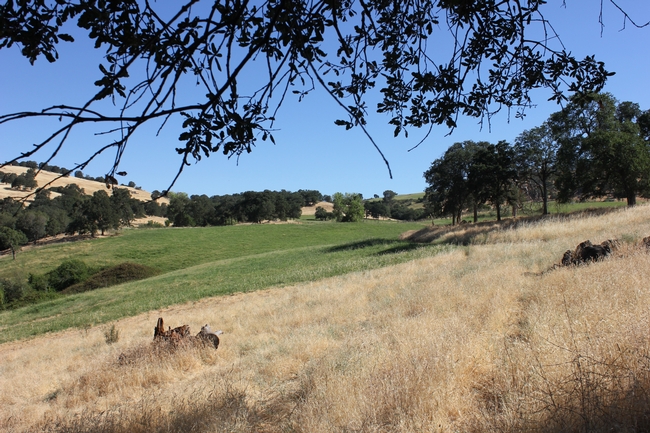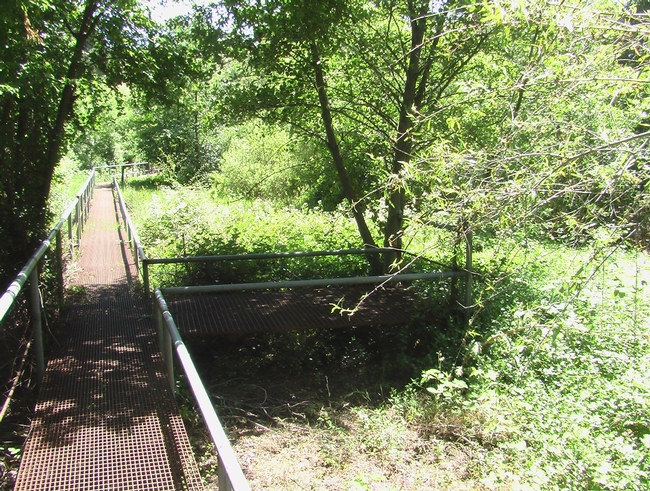Entering the Riparian Area
Nestled in the natural landscape of the Sierra Foothill Research & Extension Center, you will find a sign marking the entrance of one of the Center's two nature trails. The Porter Creek Nature Trail is less than one mile long and is marked with multiple signs, describing the history, natural resources and types of research conducted at SFREC. The trail first descends down to a bridge crossing the creek and takes hikers through three different zones.
Along the stream is the Riparian area where you will find many plants that have roots in the water or very damp soil. Even in the dry summer months, these plants usually grow tall and jungle-like since they have plenty of water. These Riparian plants are important because they help stabilize soil and filter impurities from the water in addition to providing critical habitat for a variety of wildlife. Holes in large rocks can also be found near the water where the Native Americans who once lived in the Sierra Foothills would grind acorns into flour.
Looking out over the Upland landscape to the irrigated pastures where cattle can be found grazing in the summer months
The type and density of vegetation changes drastically as you climb up from the creek, ascending to the
Upland area. The main plants here are foothill pines, blue oaks, interior live oaks, and annual grasses and forbs. These hillsides are extremely dry in the summer, but upland species, unlike the riparian plants have adapted to these harsh conditions.
Finally, hikers will come upon a convenient steel foot bridge that spans over the entire marsh area. The soil in this small basin is always saturated due to contact with the water table. Here you will find specialized plants that grow well when their roots are always wet such as cattails, reeds, forbs and shrubs. This vegetation provides nesting habitat for a rare bird species called the black rail that was recently discovered to be living in the foothills.
Foot bridge spanning over the marsh
Groups or individuals are welcome to stop by to explore the variety of plants, wildlife, and other unique natural resources highlighted on the Porter Creek Nature Trail. If interested, please call the SFREC office at (530) 639-8800. Be sure to check in at the office before setting out on your hike and you can pick up a copy of the
Guide to the Porter Creek Nature Trail or the
Trail Map. We ask that all hikers please stay on the trail, close the gates behind you, and enjoy your walk!


